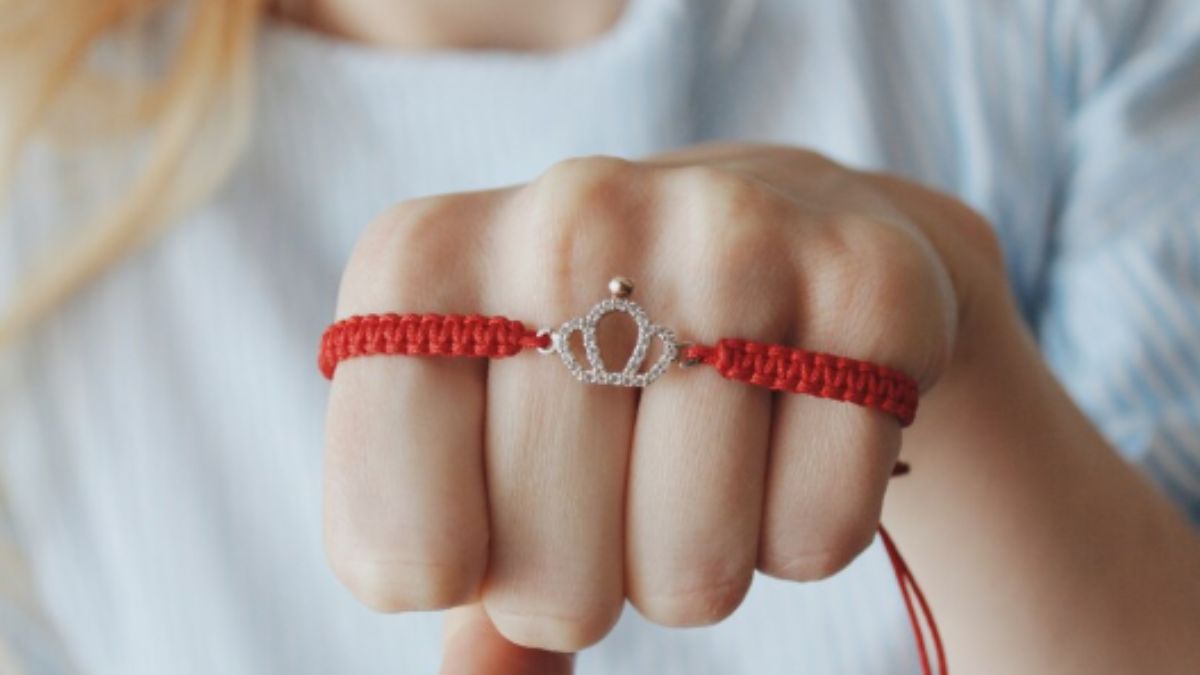Topic
The Power of Positivity: Embracing the Wave of Happy

Welcome to a world where positivity reigns supreme, and happiness is the key to unlocking endless possibilities. In this digital age filled with noise and distractions, there exists a powerful movement known as Wave_of_Happy that seeks to elevate spirits and spread joy far and wide. Join us on a journey of embracing authenticity, fostering connections, and riding the wave towards personal growth. Let’s dive in and explore the transformative power of embracing a Wave of Happy in our daily lives!
The Essence of Wave of Happy:
In a world where negativity often dominates the headlines, Wave of Happy emerges as a beacon of light, offering a refreshing perspective on life. It embodies the essence of optimism, resilience, and gratitude in the face of challenges. This movement encourages individuals to embrace positivity and cultivate a mindset focused on joy and well-being.
Navigating the Waves of Positivity with Wave_of_Happy means riding through life’s ups and downs with grace and courage. It teaches us to find beauty in simple moments, to appreciate what we have, and to spread smiles wherever we go. By embodying this ethos, we can create ripples of happiness that extend beyond ourselves into the world around us.
Joining the Wave_of_Happy community is more than just subscribing to an ideology; it’s about embodying a way of being that uplifts spirits and inspires others to do the same. Let’s dive headfirst into this sea of positivity together!
Navigating the Waves of Positivity
In the vast ocean of life, we often encounter waves of different emotions. Some days, the waters may be calm and serene, while other times they can be rough and turbulent. Navigating these emotional waves is an art that requires mindfulness and resilience.
When we choose to ride the wave of positivity, we are choosing to embrace a mindset that uplifts us even in challenging times. It’s about finding the silver lining in every situation, no matter how small or fleeting it may seem.
Positivity is not about ignoring reality; it’s about approaching challenges with a hopeful outlook and a belief that things will eventually work out for the best. By steering our thoughts towards optimism, we create a ripple effect that impacts not only ourselves but also those around us.
Just like surfing through actual waves requires balance and practice, riding the wave of positivity takes conscious effort and dedication. It’s about staying true to yourself and your values while remaining open to growth and new possibilities.
So next time you find yourself amidst stormy seas of negativity, remember that you have the power to navigate towards calmer waters by embracing the wave_of_happy mentality.
The Evolution of a Movement
The wave_of_happy movement started as a small ripple in the vast ocean of social media. It began with individuals sharing their moments of joy and positivity, inspiring others to do the same. What once seemed like fleeting trends evolved into a powerful force for good, spreading happiness across digital platforms.
As more people embraced the wave_of_happy mindset, it gained momentum and became a genuine movement aimed at uplifting spirits and promoting well-being. The evolution was organic, driven by a collective desire to counteract negativity with optimism and kindness.
Social media became not just a space for curated perfection but also a platform for authenticity and vulnerability. People shared their real stories, struggles, and triumphs, creating genuine connections based on mutual understanding and support.
The movement’s growth proved that amidst the noise of social media algorithms and comparisons, there is still room for genuine human connection built on empathy, encouragement, and celebration of each other’s joys.
Embracing Authenticity in a Digital World
In a world where filters and facades prevail, embracing authenticity is like a breath of fresh air. It’s about being true to yourself amidst the digital noise that often dictates how we should present ourselves online.
Authenticity shines through when we showcase our real selves without fear or pretense. It’s about owning our imperfections and vulnerabilities, recognizing that these traits make us uniquely human.
In a digital realm filled with curated feeds and staged moments, choosing authenticity can be a revolutionary act. It invites others to connect with the genuine essence of who we are rather than a carefully crafted persona.
When we embrace authenticity in our interactions online, we cultivate deeper connections based on trust and transparency. This raw honesty paves the way for meaningful relationships that transcend superficial appearances.
Navigating the waters of social media can be daunting, but staying true to yourself in this vast sea of influencers and trends sets you apart as a beacon of realness in an artificial landscape.
Celebrating the Joy of Connection
In a world filled with digital interactions, celebrating the joy of connection takes on new meaning. It’s about more than just likes and comments; it’s about genuine human relationships that bring light to our lives.
Connecting with others on a deeper level creates a sense of belonging and understanding. Sharing moments of joy, laughter, and even vulnerability strengthens bonds and nurtures our souls.
Whether it’s through face-to-face conversations or virtual chats, the joy of connection transcends physical boundaries. It reminds us that we are never truly alone in this vast world.
Celebrating these connections means cherishing the unique energy each person brings into our lives. It’s about embracing diversity and learning from each interaction, no matter how fleeting or profound.
The beauty of connecting with others lies in the shared experiences, memories created, and support exchanged along the way. Let’s raise a toast to the power of genuine connections that fill our hearts with warmth and happiness!
Riding the Wave Towards Personal Growth
Embarking on a journey towards personal growth is like catching a wave – it requires balance, determination, and the willingness to ride through highs and lows. Just as surfers learn to navigate the ocean’s currents, we must learn to navigate our inner selves with resilience and self-awareness.
As we ride this wave of personal growth, we may encounter challenges that test our limits and push us out of our comfort zones. Embracing these challenges with an open mind can lead to transformative experiences that shape us into stronger individuals.
Self-reflection becomes our compass as we ride towards personal growth. Taking the time to understand ourselves allows us to identify areas for improvement and set meaningful goals for the future. It’s about embracing change and learning from every twist and turn along the way.
Personal growth is not a destination but a continuous journey filled with opportunities for self-discovery and development. By riding this wave with courage and perseverance, we can unlock our full potential and become the best versions of ourselves.
A Beacon of Hope in Turbulent Times
In the midst of chaos and uncertainty, a wave of happy can serve as a beacon of hope. It shines brightly, cutting through the darkness with its infectious positivity. When life’s storms rage on, this beacon remains steady, offering solace and comfort to those in need.
Turbulent times may test our inner strength and resilience, but embracing a wave of happy can provide us with the courage to navigate through adversity. It reminds us that even in the darkest moments, there is always a glimmer of light waiting to guide us towards brighter days ahead.
This beacon of hope not only uplifts our spirits but also inspires others to find their own sources of happiness amidst challenges. By sharing our positive energy with those around us, we create a ripple effect that spreads joy and optimism throughout our communities.
Let this guiding light remind you that no matter how tough things may seem, there is always room for happiness and hope to shine through. Embrace the power of positivity and let it illuminate your path forward during turbulent times.
Spreading Happiness and Positivity to Others
In a world where negativity often dominates headlines and conversations, spreading happiness and positivity to others can be a powerful antidote. It’s like casting ripples of joy into the universe, creating a wave of good vibes that can uplift spirits and inspire change.
Simple acts of kindness, whether it’s offering a genuine compliment or lending a listening ear, can make a significant impact on someone’s day. By sharing positivity with those around us, we not only brighten their lives but also cultivate a more compassionate community.
When we choose to spread happiness and positivity, we contribute to creating a ripple effect that extends far beyond our immediate circle. Our actions have the potential to spark hope in others and ignite a chain reaction of kindness that reverberates throughout society.
So let’s make it our mission to be purveyors of joy and agents of positivity in this world. Together, we can create waves of happiness that have the power to transform hearts and minds.
Incorporating a Wave of Happy into Daily Life
Embracing a Wave of Happy into daily life is like infusing each moment with a sprinkle of sunshine. Begin your day with gratitude, setting the tone for positivity to flow throughout. Take time to savor simple pleasures – a cup of coffee, a walk in nature, or laughter shared with loved ones. Cultivate mindfulness by being present in the now, letting go of worries about the past or future.
Engage in activities that uplift your spirit – whether it’s dancing to your favorite song, reading an inspiring book, or trying something new that sparks joy within you. Surround yourself with people who radiate positivity and support your journey towards happiness. Remember that self-care is not selfish; it’s essential for nurturing your well-being.
Practice kindness towards yourself and others, creating ripples of goodwill that contribute to the collective Wave of Happy. Let go of negativity and embrace challenges as opportunities for growth and learning. By incorporating small doses of happiness into your everyday routines, you’ll find that joy becomes a familiar companion on your life’s journey.
Overcoming Obstacles to Finding Happiness
Life’s journey is filled with twists and turns, often presenting obstacles that can challenge our pursuit of happiness. These roadblocks may come in various forms – setbacks at work, strained relationships, or personal struggles that weigh us down. Overcoming these hurdles requires resilience and a positive mindset.
It’s important to acknowledge that it’s okay not to be okay sometimes. Embracing vulnerability allows us to confront our emotions head-on and seek support when needed. Surrounding ourselves with uplifting influences and fostering self-care practices can also aid in navigating difficult times.
Shifting our perspective towards gratitude helps cultivate a more optimistic outlook on life. Finding joy in simple moments and practicing mindfulness can bring clarity amidst chaos. Remember, every setback is an opportunity for growth and learning.
By actively working through challenges with determination and unwavering positivity, we pave the way towards discovering true happiness within ourselves.
The Benefits of Embracing a Wave of Happy
Embracing a Wave of Happy can have numerous benefits that extend beyond just feeling good. When we immerse ourselves in positivity, our mental and emotional well-being improves significantly. The power of positive thinking can enhance our resilience in the face of challenges, helping us navigate life’s ups and downs with grace.
Choosing to focus on happiness allows us to attract more positive experiences into our lives. It creates a ripple effect, influencing those around us and fostering deeper connections with others. By embracing a Wave of Happy, we cultivate an optimistic outlook that can lead to increased motivation, productivity, and overall success in various aspects of life.
Moreover, practicing gratitude and mindfulness as part of this wave helps to reduce stress levels and promote better physical health. By prioritizing joy and contentment, we create a harmonious balance between mind, body, and spirit. So why not ride the wave towards a brighter future filled with abundance and fulfillment?
Conclusion
In a world where negativity can easily consume us, embracing the wave of happy offers a refreshing and empowering alternative. Navigating through life’s challenges with positivity not only benefits our own well-being but also has a ripple effect on those around us.
By celebrating authenticity, fostering connections, and seeking personal growth, we can ride the wave of happy towards a brighter tomorrow. In times of uncertainty and turbulence, this movement serves as a beacon of hope, reminding us that happiness is within reach if we choose to embrace it.
Spread joy and kindness wherever you go, incorporating the essence of wave_of_happy into your daily life. Overcome obstacles with resilience and optimism, knowing that happiness is not just an emotion but a conscious decision to see the good in every situation.
So let’s continue to surf this wave together, inspiring others to join in and creating a more positive and uplifting world for all. Embrace the power of positivity today and watch how it transforms your life for the better.
Topic
6 Common Mistakes to Avoid When Setting Up a Gift Registry

When planning a special event, creating a gift registry can make the gift-giving process much easier for the guests. Many people make mistakes that can complicate their experience and create frustration for both themselves and their guests. Learning more about these common pitfalls can help you establish a successful registry. Here are six mistakes to sidestep when setting up your gift registry. Look no further!

Forgetting About the Online Gift Registry Options
There are many websites and online alternatives that offer a wealth of choices for gift registries that are easy to use for everyone. When setting up your registry for a wedding, remember the convenience that online gift registries like https://www.easyregistry.com.au/ can provide in this scenario. Traditional registry options have their charm, but they may limit accessibility for guests living out of town. An online registry allows for greater flexibility, letting guests shop from the comfort of their homes.
Many online registries offer the ability to manage your list easily, track gifts, and even integrate cash gifts. This modern twist brings convenience to both the host and the guests involved. It’s worth considering how an online gift registry might cater to your needs and those of your guests, who can enjoy a more convenient gift-giving experience.
Not Doing Sufficient Research
Creating your gift registry should not be a hasty decision. Take time to research various registry options available, as they each come with their own features and benefits. Check out the costs and the delivery options before selecting the right one for you. Many registries offer different styles, from traditional items to experiences or cash contributions.
Assess what best reflects your personal preferences and lifestyle. Once you compile a list that matches your needs, you’ll be more successful in guiding guests in their choices. When in doubt, look for reviewers and testimonials that can provide more insight into other people’s experiences.
Choosing Limited or Inappropriate Items
A mistake people make is selecting too few items or choosing items that may not be appropriate for guests. When curating your registry, look into a variety of price points. Guests like to have options since your registry will cater to different budgets. If your selections consist solely of high-ticket items, it may discourage loved ones from participating. The best would be to include affordable options, essentials, and even luxury items for guests who want to spend more.
Personalize your choices that resonate with your interests, hobbies, and lifestyle. This way, guests are more likely to feel motivated to choose something meaningful to you. Each guest will find something that fits their budget and supports your vision.
Not Updating the Registry Regularly
One of the primary considerations when managing a gift registry is to keep it updated. Registries change as guests begin purchasing items, meaning you may need to adjust your list to reflect what’s still available. Failing to do so can lead to disappointment for both you and your guests, as they may think they are buying something that is no longer an option.
Regularly log into your registry and review your selections. You can even add some new items to your list to provide fresh selections that can intrigue guests. This ongoing commitment will keep your registry up to date and keep gifts flowing.
Overlooking Personalization and Customization Options
Personalizing your gift registry can add a special touch and improve connections with your guests. Many registries allow for custom messages or photos, making each selection more meaningful. It may be a great idea for weddings, where personalized gifts resonate more deeply than generic ones. Include particular themes, colors, or even styles that reflect your personality to make your registry stand out.
Personalizing your choices brings an element of storytelling into the gift-giving process, inviting guests to be part of your journey. When they connect with the items and their significance, it creates a deeper emotional link and potentially makes their gift-giving experience more rewarding.
Failing to Communicate Your Registry Details
Many registry hosts fail to communicate their registry details effectively. Sending out an invitation or announcement will let your guests know your registry is there. Include information on where to find the registry, what type of items are included, and any options for customization.
Use social media or email to spread the word about your registry. Your guests want to give meaningful gifts and will appreciate knowing how to help you achieve your vision. Clear communication minimizes confusion, promotes wider participation, and allows guests to feel more involved in your celebration. Establishing a gift registry can be a delightful experience if approached with your guests in mind.

Now that you know how to avoid these common mistakes, you can create a registry that meets your needs and adds joy to your celebration. Take the time to reflect on your preferences, personalize your choices, and effectively communicate with your guests to achieve a smooth gift-giving experience.
Topic
Maximize Shop Productivity With These Heavy Lifting Solutions

In any industrial or commercial setting, productivity depends on how efficiently materials and equipment can be moved, positioned, or secured. Whether you’re managing a small repair shop or a large-scale production facility, having the right lifting equipment in place reduces downtime, minimizes injury risk, and keeps workflows consistent. Lifting by hand is both inefficient and dangerous, especially when dealing with repetitive tasks or bulky machinery.
Integrating smart lifting solutions is one of the most reliable ways to create a safer, faster, and more capable workspace.
Understanding the Value of the Right Equipment
Heavy lifting equipment is no longer a luxury for shops with high workloads, but a necessity. Without it, teams face strain-related injuries and slower task completion. Even a simple task, such as relocating a heavy engine part or maneuvering an industrial mold, becomes time-consuming when done manually.
The proper lifting tools are designed to reduce physical exertion while increasing the precision and control of movement. They help operators work smarter, not harder. This improvement affects more than just the person doing the lifting; it changes the pace and flow of the entire operation.
Prioritizing Safety With Every Lift
Investing in lifting solutions is as much about safety as it is about productivity. Improper lifting is one of the most common causes of workplace injury, especially in jobs that involve repetitive movements or heavy equipment. Employers who implement professional lifting systems reduce the physical toll on their teams and promote a culture of safe practices.
Informed buyers often turn to experienced suppliers for advice and solutions tailored to their space. Companies like Heavylift Direct and similar ones provide a wide range of equipment suited to shops of different sizes and industries. Their expertise helps businesses identify the most effective lifting strategies for their needs. Making the right purchase starts with understanding your workflow and identifying areas where equipment can fill gaps or prevent risk.
Overhead Cranes for Large-Scale Operations
In larger shops and warehouses, overhead cranes are game changers. They allow operators to lift and transport heavy loads across wide areas without interfering with floor traffic. By installing rails or freestanding cranes, businesses gain full control over their work area while maintaining valuable floor space for other operations.
These systems also support heavier weight capacities compared to forklifts or manual options. Whether lifting raw materials, machinery, or finished products, overhead cranes provide reliable movement that integrates seamlessly into high-demand environments.
Gantry Cranes for Flexible Lifting
For businesses that need portable lifting options or temporary setups, gantry cranes deliver adaptability. These cranes consist of a frame on wheels or tracks that supports a hoist. Since they’re not fixed to a structure, gantry cranes can be moved around the shop floor or even outdoors as needed.
This flexibility allows teams to perform heavy lifts in multiple zones without requiring multiple cranes. Smaller models are suitable for lifting engines or HVAC units, while larger models can handle containers or pallets. The added mobility enhances shop efficiency, especially in dynamic or project-based environments.
Hydraulic Lifts for Precision Control
Hydraulic lifts offer excellent control for lifting equipment that needs careful handling. Whether adjusting the height of a workstation or raising machinery for maintenance, hydraulic systems allow for incremental movement. Their smooth operation reduces the risk of abrupt shifts or tipping, which protects both equipment and staff.
These solutions are often used in assembly lines, mechanical service bays, and laboratories. They’re particularly useful when a consistent lift height is needed across multiple stations, improving standardization and reducing human error.
Jib Cranes for Targeted Areas
When lifting is confined to a particular workstation or area, jib cranes are one of the most efficient choices. These cranes feature a rotating arm that extends from a fixed point—either mounted to a wall or floor. They allow for targeted lifting within a limited radius, perfect for welding stations, assembly lines, or parts storage.
The compact design of jib cranes makes them ideal for shops with tight layouts. They keep lifting localized without interrupting other workflows or requiring excess floor space.
Forklifts for Versatile Material Handling
Forklifts remain one of the most popular heavy lifting tools for good reason. They’re highly mobile, intuitive to operate, and capable of handling everything from pallet loads to bulky equipment. For shops that frequently receive or ship goods, forklifts streamline logistics by reducing load/unload times and improving material flow.
Even within the shop itself, forklifts make it easier to move supplies from one area to another. When paired with training and maintenance, they become one of the most reliable assets in any industrial environment.
Elevating Efficiency With Hoists
Hoists are often used in tandem with cranes and lifting frames, particularly when vertical lifting is needed. Chain hoists, electric hoists, and pneumatic hoists provide a range of force and control depending on the task. Their mechanical advantage allows a single operator to move loads that would otherwise require multiple people.
Hoists shine in confined spaces and precision tasks where controlled lifting is critical. When overhead height is limited, low-profile hoists still provide a lifting solution that fits within spatial constraints.
Maintenance Matters
No lifting system works well if it’s neglected. Routine maintenance of cranes, lifts, hoists, and forklifts is critical to keeping operations safe and uninterrupted. Worn cables, unbalanced loads, or delayed inspections all create unnecessary hazards. A well-documented maintenance schedule, along with employee training, ensures long-term reliability.
Shops that take lifting equipment seriously often establish dedicated roles or teams for equipment upkeep. Whether it’s weekly checks or annual certifications, small steps taken consistently protect both assets and personnel.

Heavy lifting solutions are more than tools; they’re investments in efficiency, safety, and future growth. The right combination of cranes, hoists, lifts, and forklifts reduces strain, increases speed, and allows shops to function at their highest level. Prioritizing smart lifting strategies today lays the foundation for smoother operations and a more productive tomorrow.
Topic
The Power of a Well-Chosen Bracelet in Your Outfit

Accessories are the secret weapons of fashion. Often small, but with the ability to transform an entire look. Among these, bracelets stand out as one of the most versatile and expressive pieces you can add to your ensemble. A well-chosen bracelet is a statement, a mood setter, and a personal signature all at once. Whether you’re dressing up for a formal event or simply aiming to add a touch of flair to a casual outfit, the right bracelet can elevate your style with subtlety or boldness, depending on your choice. In this blog post, we’ll explore how a bracelet can powerfully influence your outfit, reflecting your personality, enhancing your look, and making your style uniquely yours.

Express Your Personality Through Style
A bracelet can be a window into your personality. Whether you prefer delicate chains, chunky cuffs, or beaded strands, each style tells a story about who you are. For example, someone who opts for a sleek silver or gold bracelet may be conveying elegance and sophistication, while a colorful, handmade beaded bracelet might reflect creativity and a free spirit. This personal expression through bracelets allows you to showcase parts of your identity without saying a word. Mixing and matching different styles can further tell a complex story about your mood or preferences on any given day. A well-chosen bracelet acts as a wearable conversation starter and an extension of your narrative.
Enhance Seasonal and Occasion Styles
The bracelet you choose can reflect the season or occasion, subtly adapting your outfit to the moment. Light, airy bracelets with shells or pastel beads are perfect for summer, adding a beachy, relaxed vibe to your look. In winter, men’s leather bracelets, or those with dark metals, or adorned with gemstones, can lend warmth and luxury. Occasion-specific bracelets, like sparkling diamond cuffs for formal events or colorful woven pieces for festivals, help you blend with or stand out in the right way. By thoughtfully selecting bracelets that resonate with the time of year or event, you ensure your outfit feels intentional and well-considered, demonstrating attention to detail that makes a lasting impression.
Complement Your Outfit’s Color Palette
One of the most practical yet overlooked aspects of choosing a bracelet is how well it complements the colors of your outfit. A bracelet doesn’t have to exactly match your clothing, but thoughtful coordination can tie an entire look together. For example, a warm-toned bracelet with gold or bronze accents pairs beautifully with autumnal colors like browns, oranges, and deep greens. Silver or cool-toned bracelets harmonize well with blues, greys, and purples. Even neutral colors such as black, white, or beige benefit from the subtle shine and texture of a metallic or leather bracelet. Paying attention to color harmony helps ensure your bracelet enhances rather than clashes with your ensemble, creating a cohesive and polished appearance.
Balance Simplicity and Statement Pieces
A bracelet’s power in your outfit often lies in the balance between simplicity and statement. For a minimalist look, a thin, understated bracelet can add a touch of class without overwhelming your outfit. This approach works particularly well in professional or formal settings where subtlety is key. Statement bracelets can become the focal point of your look. These pieces work wonders when paired with simpler clothing, upgrading your outfit and drawing attention to your wrist. Knowing when to keep it simple or go bold with your bracelet choice helps you control the vibe and impact of your style.
Reflect Cultural or Sentimental Significance
Beyond aesthetics, bracelets often carry cultural or sentimental value, adding depth to your outfit beyond just fashion. Many people wear bracelets gifted by loved ones, heirlooms, or pieces symbolizing significant life events or beliefs. This imbues your look with a unique personal significance that can make your style feel more authentic and meaningful. Bracelets with cultural or spiritual motifs connect you to traditions and communities, enhancing your outfit with layers of identity. When you choose a bracelet with significance, you’re honoring your story and values, making your outfit truly yours.
Layering Bracelets for Texture and Dimension
Layering multiple bracelets is a popular trend that adds texture, depth, and personality to your look. Combining different materials, like leather, metal, fabric, or beads, creates a rich, tactile experience on your wrist. Layering allows for creative expression, mixing casual and formal elements or blending colors and shapes in eye-catching ways. For example, a thin gold chain layered with a beaded friendship bracelet and a leather strap can effortlessly merge sophistication with boho-chic. The key to successful layering is balance: varying the thickness, style, and color while maintaining harmony so the bracelets complement rather than compete. This technique transforms your outfit into a curated work of art, showcasing your fashion savvy.

A well-chosen bracelet holds incredible power in shaping your outfit and your style. From expressing your personality to complementing colors, balancing simplicity and statement, reflecting deeper meanings, layering for dimension, and enhancing seasonal or occasion-specific looks, bracelets are a small yet mighty accessory. They offer endless possibilities for creativity and self-expression while effortlessly upgrading your appearance. Next time you prepare your outfit, consider the impact a single bracelet can make. With the right bracelet, you wear confidence, identity, and style that stand out.

 Cartoon1 year ago
Cartoon1 year agoUnlocking the Potential of Nekopoi.care: A Comprehensive Guide

 Game1 year ago
Game1 year agoExploring Aopickleballthietke.com: Your Ultimate Pickleball Destination

 BUSINESS1 year ago
BUSINESS1 year agoWhat Companies Are In The Consumer Services Field

 BUSINESS1 year ago
BUSINESS1 year agoUnraveling the Mystery of 405 Howard Street San Francisco charge on Credit Card

 HOME IMPROVEMENT1 year ago
HOME IMPROVEMENT1 year agoVtrahe vs. Other Platforms: Which One Reigns Supreme?

 TECHNOLOGY1 year ago
TECHNOLOGY1 year agoThe Guide to Using Anon Vault for Secure Data Storage

 ENTERTAINMENT11 months ago
ENTERTAINMENT11 months agoUnderstanding Bunkr Album: A Comprehensive Guide

 ENTERTAINMENT1 year ago
ENTERTAINMENT1 year agoThe Epic Return: Revenge of the Iron-Blooded Sword Hound
















